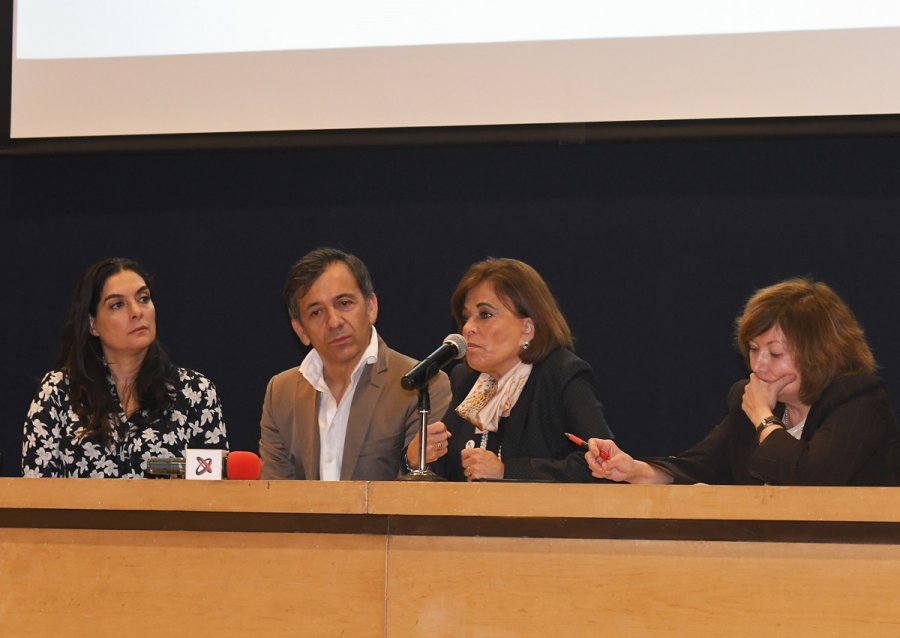Noticias
A DMG Foundation Project
Goya will be shown as the critic of the society of his time
March 13, 2018The 80 engravings that make up the controversial series Los Caprichos (The Caprices) by the Spanish painter Francisco de Goya y Lucientes (1746-1828), in which the Aragonese genius satired Spanish society in the 18th century, are exhibited until May 15 at the Palace of the Medical School in Mexico City.
The exhibition titled Los Caprichos de Goya (The Caprices of Goya), brought to Mexico by the Dancing for the Millenium Goals Foundation (DMG Foundation), presents engravings printed in 1905 in three divisions: Majas, amorios y desengaños, los matrimonios arreglados y the Celestina (Majas, love affairs and disappointments, arranged marriages and the Celestina; Crítica social, el escepticismo y la sátira (Social criticism, skepticism and satire); and El mundo irreal, las brujas y los duendes (The unreal world, witches and elves).
The curator of the exhibition Pilar Sedano Espin, director of restoration of the Prado Museum in Spain, explains that Francisco de Goya was an artist committed to society, whose Caprichos depicted a series of abuses by the nobility and the clergy, actions that the artist disapproved.
The etchings on display, said the collaborator of the Reina Sofia Museum in Madrid, are divided into three stages: the first is "soft", because you can see in it the customs in Spain; the second is a tremendous satire with which he criticizes the lust and greed of the clergy and the nobility that he represents with figures of animals and beasts; and the third the dreams and delusions, which are when Goya becomes deaf, creating his inner world.
“He was against abuse in a society and ignorance, he supported education so that people would leave superstition. Inequality and abuse of power are other issues that he represented in his engravings”, said the curator.
She pointed out that the pieces created with a mixed technique of etching, aquatint and dry-point retouching have been widely interpreted during many ages, which shows that there is much interest in them both inside and outside Spain, because despite the 200 years of antiquity they are totally current in our time.
She explained that of this series there are several printings that began to be made in 1799, but when Los Ilustrados, a group with which the artist had a close relationship, lost power he quickly took the edition off for fear of being destroyed by the Inquisition.
“In 1803 Goya decided to donate the printing plates and 240 copies to the king for the Royal Chalcography Archive, then, at the end of the 19th and early 20th centuries, several engravings were made until 1937, the year they were no longer made”, said the international expert in restoration and conservation of works of art.
The Medical School of Mexico City is the third venue in Mexico, where the exhibition Los Caprichos de Goya is exhibited, after being at the Baroque Museum of Puebla and the Museum of Art MUSAS of Sonora.
The Caprichos begin with a self-portrait of the artist, the following engravings point to themes regarding religion, morality, love, ignorance, marriage, education, superstition, among others.
Some titles of the pieces that can be appreciated are El sueño de la razón produce monstruos (The sleep of reason produces monsters), Hasta su abuelo (And so was his grandfather), Mucho hay que chupar (There is a lot to suck), Dios la perdone: Y era su madre (Should God forgive her: She was her mother), ¿Dónde va mamá? (Where is mother going?) ¡Linda maestra! (Pretty teacher), ¿De qué mal morirá? (Of what illnes will he die?), Muchachos al avío (Lads making ready) and Que viene el coco (Here comes the bogeyman).
The exhibition is part of the Dancing for the Millennium Goals Foundation's project, whose mission is to promote culture using the arts as a universal language, in order to communicate the United Nations Sustainable Development Goals (ODS).
The exhibition Los Caprichos de Goya can be visited from March 13 to May 15 at the Palace of the School of Medicine. Schedule: Monday to Sunday from 9 am to 6 pm. Closed for holidays from March 25th to April 1st. The building is located at 33 República de Brasil Street, corner with República de Venezuela, in the Historic Center of Mexico City.
Mexico,Distrito Federal
